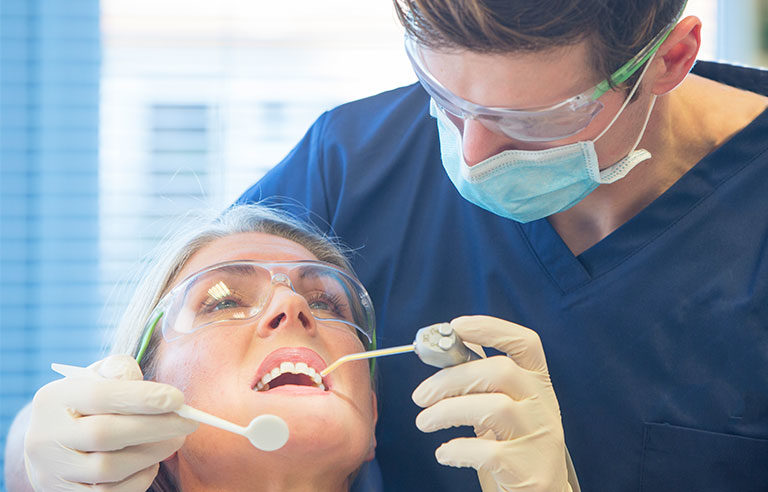Many dental offices lack plans for controlling bloodborne exposures, survey finds

Washington – Twenty-eight percent of private dental practices have not fulfilled OSHA’s requirement for a written, site-specific bloodborne pathogens exposure control plan, according to the results of a recent survey conducted by NIOSH and the Organization for Safety, Asepsis and Prevention, an oral health care advocacy group.
OSHA’s Bloodborne Pathogens Standard is intended to protect health care workers from diseases such as HIV, hepatitis B and hepatitis C, which can be transmitted from patient to dental health care providers or from patient to patient through contact with blood or other body fluids.
The survey included responses from 1,059 participants from private, non-franchised dental practices in the United States. Participants – including dentists, dental hygienists and other staff – answered questions about whether they knew about the OSHA requirement, had a written exposure control plan with all requisite elements and could identify potential roadblocks to implementing an exposure control plan.
Among the findings:
- 65 percent of respondents did not use needles that had sharps injury prevention features.
- 50 percent of respondents without an exposure control plan did not intend to develop one in the next year.
- 24 percent had not reviewed their exposure control plan in the past 12 months.
- 20 percent of respondents with an exposure control plan had not implemented all the required elements. Among the reasons given were “not aware it was needed” (50 percent), “lack of expertise” (47 percent) and “lack of time” (36 percent).
- 15 percent did not offer hepatitis B vaccines to employees.
“Having an effective exposure control plan that everyone in the dental office is aware of will better protect dental health care personnel and their patients from exposure to bloodborne pathogens,” NIOSH Director John Howard said in a press release. “Identifying any barriers to the implementation of an exposure control plan is a critically important step to making the exposure control plan as effective as it can be.”
The results of the survey were published in the June edition of the Compendium of Continuing Education in Dentistry.
Post a comment to this article
Safety+Health welcomes comments that promote respectful dialogue. Please stay on topic. Comments that contain personal attacks, profanity or abusive language – or those aggressively promoting products or services – will be removed. We reserve the right to determine which comments violate our comment policy. (Anonymous comments are welcome; merely skip the “name” field in the comment box. An email address is required but will not be included with your comment.)

